Arthrosis is a chronic joint disease in which the cartilage of the joint is gradually destroyed.When the cartilage is destroyed, the changes arise in the bone that cover the cartilage and joint capsule.
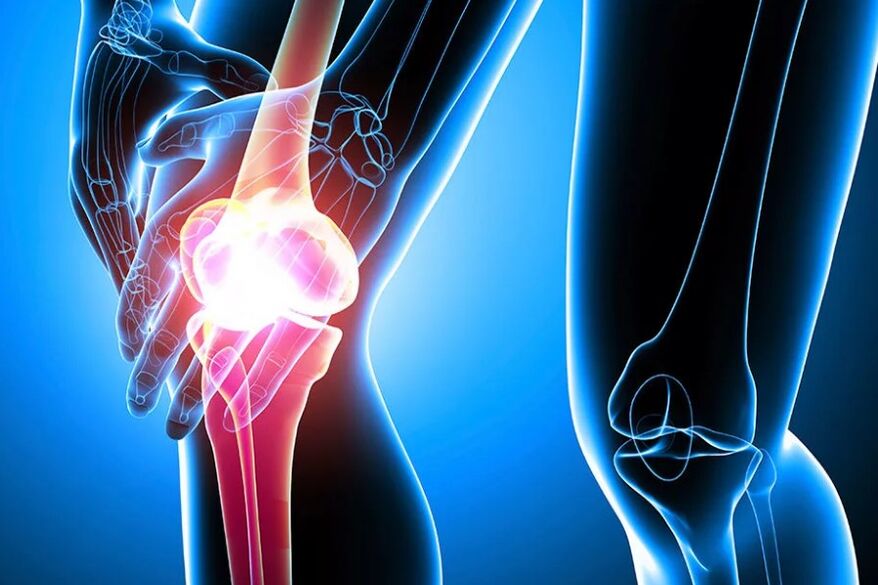
What does the word arthrosis mean and what is its synonyms?However, this description is not fully accurate, as there is some inflammatory changes in the joint.In English -speaking countries, most of our arthrosis is called arthritis (arthritis), ie.Inflammatory joint disease (ITIS suffix), and we are usually called arthritis, damage to the joints in rheumatic diseases, infectious, cleanser damage on the joint, etc.In modern scientific articles, the term osteoarthritis is more common (from the Greek words "osteo" - bone, "arthritis" - joint, ie non -information disease).Again, in English, "Our" Arthrosis is called osteoarthritis (ostethoarthritis), ie inflammatory disease of the joint and bone.
ტერმინი ართროზი მოდის ბერძნული სიტყვიდან "ართროები" - სახსარი და სუფიქსი "ოზისი" - არაინფორმაციული დაავადება. ამასთან, ეს აღწერა არ არის სრულად ზუსტი, რადგან სახსარში ართროზით არის გარკვეული ანთებითი ცვლილებები. ინგლისურენოვან ქვეყნებში, "ჩვენს" ართროზს უმეტესი შემთხვევები ეწოდება ართრიტი (ართრიტი), ე.ი. ანთებითი ერთობლივი დაავადება (Itis სუფიქსი), ხოლო ჩვენ, როგორც წესი, ართრიტს უწოდებენ, რევმატულ დაავადებებში სახსრების დაზიანებას, ინფექციური, გამწმენდის დაზიანებას სახსრზე და ა.შ.
თანამედროვე სამეცნიერო სტატიებში, ტერმინი ოსტეოართროზი უფრო ხშირად გვხვდება (ბერძნული სიტყვებიდან "ოსტეო" - ძვალი, "ართროები" - სახსარი, ანუ სახსრისა და ძვლების არაინფორმაციული დაავადება). ისევ და ისევ, ინგლისურ ენაზე, "ჩვენს" ოსტოს ართროზს ეწოდება ოსტეოართრიტი (ოსთეტოართრიტი), ანუ სახსრისა და ძვლის ანთებითი დაავადება.
Often we hear from patients: "Arthrosis was initially diagnosed and now osteoarthritis is already writing. Is it really bad?"In fact, arthrosis and arthritis are synonymous and your doctors were talking about the same issue.
As we have already mentioned from the beginning, arthrosis (osteoarthritis), cartilage is gradually destroyed and the bones gradually participate in the process.With arthrosis in the bone, the sclerosis (compaction) is first caused by the loss of shock creator properties.Then there are dots along the edges of the bone (exostosis), often mistakenly referred to as " salt deposits "- In fact, with the usual arthrosis, there are no salts.At a later course of the disease, the bone begins to curves, deform, cysts: often called "disease. Arthrosis deformity (osteoarthritis).
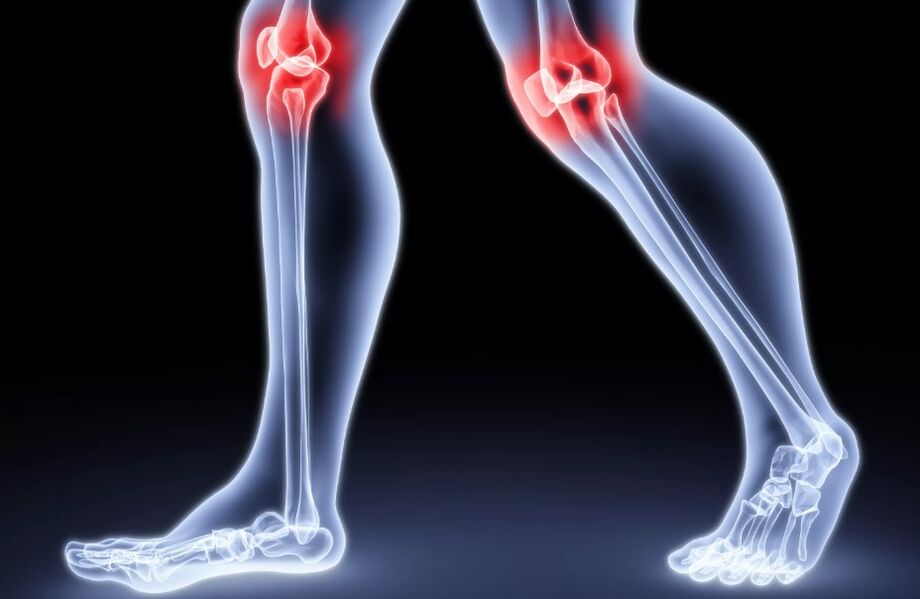
The exact causes of arthrosis development have long been an unknown, so another name of this disease is - idiopathic arthrosis , ie.Arthrosis that arises for unknown reasons or spontaneously.Of course, scientists now no longer consider the mystery of arthrosis and the reasons for its development are known.The causes of more arthrosis of what primary and secondary arthrosis is below.
Arthrosis more often on the joints that experience maximum load (thigh, knee, ankle joint, hand joints).The thigh joint arthrosis is called coxarthrosis (from the word "cox" - thigh), ankle joint - Croosteoarthritis ("Cruise" - Lower leg), knee - knee - knee - knee - knee - knee - knee - knee - knee - knee - knee - knee - knee - knee("Gene" - knee).In most cases, arthrosis affects both knees joints, and one of the joints may be more destroyed.In this case, the diagnosis sounds like bilateral gonarthrosis, which has the predominant injury to the right (or left) knee joint.გონარტროზი ("გენი" - მუხლზე). უმეტეს შემთხვევაში, ართროზი მოქმედებს ორივე მუხლის სახსრებზე, ხოლო ერთ -ერთი სახსარი შეიძლება უფრო განადგურდეს. ამ შემთხვევაში, დიაგნოზი ჟღერს ორმხრივი გონართროზით, რომელსაც აქვს მარჯვენა (ან მარცხენა) მუხლის სახსრის უპირატესი დაზიანება.
Often, not one, but several joints affect arthrosis, so they use another term - polyosteozarosis which means defeating three or more joints (two symmetrical, for example, knee and some others).In this case, the diagnosis usually sounds as follows: Polyosteoarthritis of the knee joints (or any of them) is predominantly damaged.
Why does knee joint arthritis occur?
Article joint arthrosis is different.For the causes of its origin, primary and secondary arthrosis is distinguished.With age, the refreshing of the cartilage slowes down and the destruction of the cartilage, called the degradation or degeneration process, begins to prevail.
მუხლის სახსრის პირველადი ართროზი
არტიკულარული ხრტილი მუდმივად განადგურებულია და განახლებულია და ჩვეულებრივ, ეს პროცესები დაბალანსებულია. ასაკთან ერთად, ხრტილის განახლება შენელდება და ხრტილის განადგურება, რომელსაც უწოდებენ დეგრადაციის ან დეგენერაციის პროცესს, იწყებს გაბატონებას.
The process of cartilage synthesis and destruction is usually balanced.If degeneration begins with excess, then knee joint arthrosis will begin
In most cases, cartilage degeneration, ie arthrosis, develops after 45-50 years, but sometimes arthrosis may develop within 20 years.Fortunately, in such youth arthrosis is very rare.
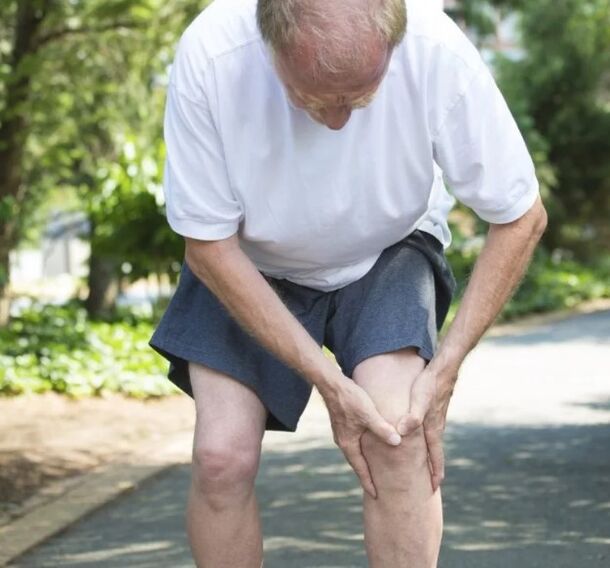
People are prone to knee joint arthrosis larger or less.Typically, if arthrosis occurs, then at the age of 40-60, and if there is no arthrosis at the age of 60, then it is likely to be no more, or rather, arthrosis will be minor (some degenerative changes in the knee joint are found in all older people, but they are different).90%will be signs of arthrosis, but not all of them feel the elbows as a problem.This is especially true for men who often "serious" arthrosis do not show themselves or cause minimal inconvenience.
Primary arthrosis occurs spontaneously, that is, without the factors, so it is called the idiopathic that we talked about earlier.So we have already found out that age is one of the main factors that determine the development of arthrosis, as cartilage degeneration processes begin with age.Every fourth person over the age of 55 experiences arthrosis of knee joints.But we also mentioned that with age, arthrosis not everyone develops.So there are other reasons.Before we list them, we note that there is no basic, main reason.Knee joint arthrosis develops in terms of causes, while others play a major role, and some less.
პირველადი ართროზი ხდება სპონტანურად, ანუ ფაქტორების გაშვების გარეშე, ამიტომ მას ეწოდება იდიოპათიური, რომელზეც ადრე ვისაუბრეთ.
ასე რომ, ჩვენ უკვე გავარკვიეთ, რომ ასაკი არის ერთ -ერთი მთავარი ფაქტორი, რომელიც განსაზღვრავს ართროზის განვითარებას, რადგან ხრტილოვანი დეგენერაციის პროცესები ასაკთან ერთად იწყება. 55 წელზე უფროსი ასაკის ყოველი მეოთხე ადამიანი განიცდის მუხლის სახსრების ართროზს. მაგრამ ჩვენ ასევე აღვნიშნეთ, რომ ასაკთან ერთად, ართროზი ყველას არ ვითარდება. ასე რომ, არსებობს სხვა მიზეზები. სანამ მათ ჩამოვთვლით, აღვნიშნავთ, რომ არ არსებობს ძირითადი, მთავარი მიზეზი. მუხლის სახსრის ართროზი ვითარდება მიზეზების თვალსაზრისით, ზოგი კი დიდ როლს ასრულებს, ზოგი კი - ნაკლები.
Flooring. More often, knee joint women suffer from women.The exact causes of this are unknown, but you can try to explain the following reasons.On average, women's life expectancy is greater than in men, and therefore the average older woman expresses more degenerative processes.In addition, body weight in women is slightly more than average.In women, the size of the bone is smaller than in men and, with the higher weight of the body, this causes higher pressure in the knee joint and, consequently, more intense mechanical destruction of the cartilage.In most cases of women, arthrosis begins after termination of menstruation and perhaps estrogen deficiency determines the development of arthrosis.Keep in mind that estrogens after menopause in women's knee arthrosis treatment attempts are certainly implemented, but so far they are unsuccessful.
Of course, the greater the body weight, the greater the load on our knee.In addition, excess weight reduces physical activity and causes weakness of the thigh muscles.For more active synthesis of cartilage, movements (without excessive pressure) are required, and in a seductive lifestyle, cartilage cartridge processes begin to excess.The thigh muscles are important stabilizers of the knee joint, and with the weakness of these muscles, the knee joint movement becomes more painted, which accelerates the destruction of the cartilage.In general, these processes can be described as a vicious circle: the greater the body weight, the faster the knee joint is destroyed, the greater the pain, the more difficult it is to move, which still causes excess weight of the body.რასაკვირველია, რაც უფრო დიდია სხეულის წონა, მით უფრო დიდი დატვირთვა უნდა გადავიდეს ჩვენს მუხლზე. გარდა ამისა, ჭარბი წონა ამცირებს ფიზიკურ აქტივობას და იწვევს ბარძაყის კუნთების სისუსტეს. ხრტილოვანი უფრო აქტიური სინთეზისთვის აუცილებელია მოძრაობები (ჭარბი წნევის გარეშე), ხოლო მაცდუნებელი ცხოვრების წესით, ხრტილოვანი ვაზნის პროცესები იწყება ჭარბი. ბარძაყის კუნთები მუხლის სახსრის მნიშვნელოვანი სტაბილიზატორებია და ამ კუნთების სისუსტით, მუხლზე სახსარში მოძრაობა უფრო მოხატული ხდება, რაც აჩქარებს ხრტილის განადგურებას. ზოგადად, ეს პროცესები შეიძლება შეფასდეს, როგორც მანკიერი წრე: რაც უფრო დიდია სხეულის წონა, მით უფრო სწრაფად განადგურებულია მუხლის სახსარი, რაც უფრო დიდია ტკივილი, მით უფრო რთულია მისი გადაადგილება, რაც კვლავ იწვევს სხეულის ჭარბი წონას.

Obesity vicious circle and knee joint arthrosis
On the other hand, only knee joint arthrosis develops only in full people - those who do not have obesity may also suffer arthrosis.Again, this is because arthrosis has no reason.
Heritage. It has long been noticed that arthrosis of the knee joints is a "family" disease.If you have arthrosis or your parents, then, unfortunately, the likelihood of this disease is high for you.Scientists have discovered the properties of many genes that are responsible, such as the individual properties of the cartilage cartridge structure - collagen, but unfortunately, these discoveries are not yet practical because we cannot affect the prevention or treatment of arthrosis.There is evidence that the heritage of arthrosis moves along the woman's line, which partially removes the great tendency of this disease.The primary arthrosis of the knee joint is not found only for one reason, but only by their entity.At the same time, knee joint arthrosis is in one degree or another in almost every person over the age of 60, but the severity of arthrosis is very different and not always arthrosis, found on radiography itself.In fact, this is even more difficult: there is no pain in the knee joint in the elderly or, moreover, at the age of 40-60, accompanied by changes in arthrosis radiography.For example, scientists have found that 76% of the elderly who have knee pain claims have been reported on radiography.
მუხლის სახსრის პირველადი ართროზი არ გვხვდება მხოლოდ ერთი მიზეზის გამო, არამედ მხოლოდ მათი მთლიანობით. ამავდროულად, მუხლის სახსრის ართროზი ერთ ხარისხზე ან სხვა ადამიანშია 60 წელზე უფროსი ასაკის თითქმის ყველა ადამიანში, მაგრამ ართროზის სიმძიმე ძალიან განსხვავებულია და არა ყოველთვის ართროზი, რომელიც ნაპოვნია რენტგენოგრაფიაზე, ვლინდება თავად. სინამდვილეში, ეს კიდევ უფრო რთულია: არავითარი ტკივილი არ არის მუხლის სახსარში ხანდაზმულ პირში ან, უფრო მეტიც, 40-60 წლის ასაკში თან ახლავს ართროზის დამახასიათებელი რენტგენოგრაფიის ცვლილებები.
მაგალითად, მეცნიერებმა დაადგინეს, რომ ხანდაზმულთა 76% -ს, რომელსაც აქვს მუხლებზე ტკივილის პრეტენზიები, რენტგენოგრაფიაზე დაფიქსირდა ართროზი.That is, in the elderly the knee joint is not a knee arthrosis. Ie, not always existing arthrosis.It happens that the changes in radiography are completely minor, the pain is severe, and this happens in the other way: the joint is completely destroyed on the X -ray, and people can ride the bike, get involved in yoga, work in Malorus, and in such cases we often find the knee joint.Affected from arthrosis from the inside.The blue arrow marked the outer section of the joint, and the orange - the interior of the joint.Notice how the gap between the bones is from the inside: cartilage radiographs are not visible and this is this gap, which means cartilage.In this case, there is no cartilage inside the knee joint and the bone is already covered on the bone. Since arthrosis often affects both knees joints, that is, it is bilateral, both legs begin to turn around and deform the O-shaped leg (changing deformity).
მკაცრად რომ ვთქვათ, არ არსებობს სავალდებულო კავშირი ტკივილის სიმძიმის შესახებ რენტგენოგრაფიზე მუხლზე სახსრის ართროზის სიმძიმესთან. ეს ხდება, რომ რენტგენოგრაფიის ცვლილებები სრულიად უმნიშვნელოა, ტკივილი კი ძლიერია, და ეს ხდება სხვა გზით: სახსარი მთლიანად განადგურებულია რენტგენოგრაფზე, ხოლო ადამიანს შეუძლია ველოსიპედით სიარული, იოგაში ჩაერთოს, იმუშაოს როგორც მალორუსში, და ასეთ შემთხვევებში თითქმის ყოველდღე ვხვდებით.
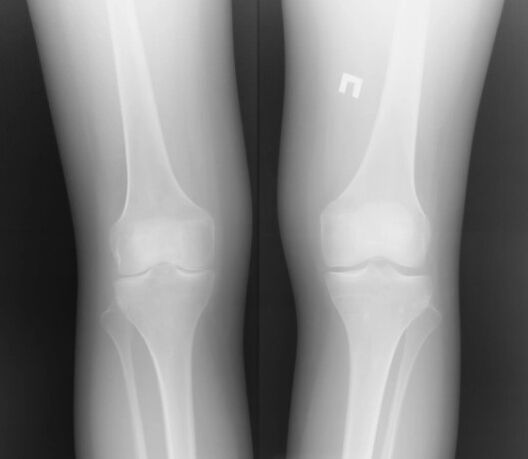
უფრო ხშირად, მუხლის სახსრის ართროზი იწყება შიდა (მედიალური) განყოფილებით.
მუხლის სახსრის რენტგენოგრაფია, რომელიც დაზარალებულია ართროზიდან შიგნიდან. ცისფერმა ისარი აღინიშნა სახსრის გარე მონაკვეთი, ხოლო ფორთოხალი - სახსრის ინტერიერი. ყურადღება მიაქციეთ იმას, თუ როგორ არის უკვე უფსკრული ძვლებს შორის შიგნიდან: ხრტილოვანი რენტგენოგრაფია არ ჩანს და ეს არის ეს ხარვეზი, რაც ნიშნავს ხრტილს. ამ შემთხვევაში, მუხლზე სახსრის შიგნით არ არის დარჩენილი ხრტილოვანი და ძვალი უკვე ძვალზეა გადახურული.
მუხლის სახსრის შიგნიდან ხრტილის თანდათანობითი აბრაზიით, ფეხი იწყებს მოხრილი. ვინაიდან ართროზი ხშირად მოქმედებს ორივე მუხლის სახსრებზე, ანუ ის ორმხრივია, ორივე ფეხი იწყებს გადაბრუნებას და ხდება O- ფორმის ფეხის დეფორმაცია (ცვალებად დეფორმაცია).
Less often (in about 10% of cases), the outer parts of the joint are affected by arthrosis, and in this case the X-shaped (valgus) deformation begins.
And between the fur fur fur.This option is called Patello-Fomenal Arthrosis and usually it happens
angled, sample subluification, lateral hyperPress syndrome a separate article on our website About which you can read in a separate article.Now we will briefly talk about secondary arthrosis options.Of course, knee joint injuries do not add to the health of the joint and almost all of them, in some ways, increases the risk of arthrosis.Unfortunately, the Meniscus gap has ever had the likelihood of developing arthrosis.If the medication (internal) mensky is damaged, then arthrosis is more developed in the interior of the knee joint.And, therefore, if the external meniscus blasts, then arthrosis will develop in the outer joint of the joint.Keep in mind that the breakdown of the pelvis does not always cause arthrosis, the likelihood of developing it.Of course, the more menscus is damaged, the higher the risk of arthrosis.პატელას მოტეხილობები , რომლის შესახებაც შეგიძლიათ წაიკითხოთ ცალკეული სტატიაში.
მუხლის სახსრის მეორადი ართროზი
მუხლის სახსრის ართროზი ასევე შეიძლება განვითარდეს ნებისმიერი კონკრეტული მიზეზების გამო, ამ შემთხვევაში ართროზს მეორეხარისხოვანი ეწოდება. ახლა ჩვენ მოკლედ ვისაუბრებთ მეორადი ართროზის ვარიანტებზე.
მუხლის სახსრის შემდგომი ტროუმატული ართროზი. რა თქმა უნდა, მუხლის სახსრის დაზიანებები არ დაამატებს ჯანმრთელობის სახსარს და თითქმის ყველა მათგანს, ამა თუ იმ გზით, ზრდის ართროზის რისკს.
მუხლის სახსრის ერთ -ერთი ყველაზე გავრცელებული დაზიანება არის მენჯისის რღვევები, რომელიც ჩვენს ვებ - გვერდზე ცალკეულ სტატიას ეძღვნება. სამწუხაროდ, Meniscus- ის უფსკრული ნებისმიერ ადამიანს ოდესმე ჰქონია ართროზის განვითარების ალბათობა. თუ დაზიანებულია მედიკამენტური (შიდა) მენსკუსი, მაშინ ართროზი უფრო განვითარდება მუხლის სახსრის ინტერიერში. და, შესაბამისად, თუ გარე მენისკუსი ააფეთქებს, მაშინ ართროზი განვითარდება სახსრის გარე სახსარში. გაითვალისწინეთ, რომ მენჯისის რღვევა ყოველთვის არ იწვევს ართროზს, მისი განვითარების ალბათობას. რასაკვირველია, რაც უფრო მეტი დაზიანებულია მენსკუსი, მით უფრო მაღალია ართროზის რისკი.
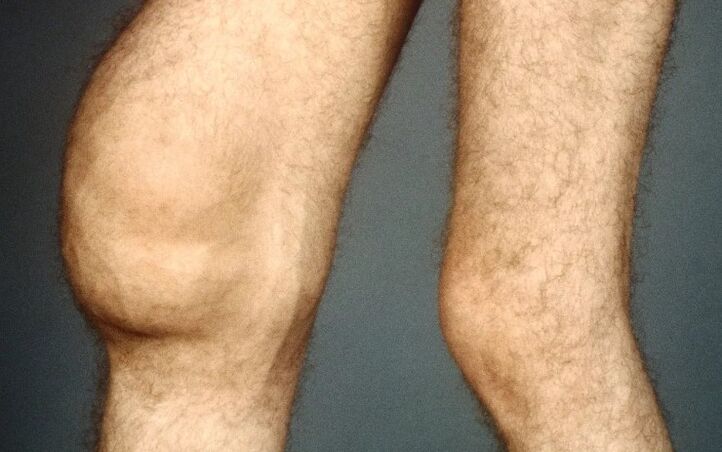
Another reason for the development of knee joint arthrosis is the decomposition of the ligament, such as the decomposition of the previous cross -ligament.As a result of decomposition of ligaments in the joint, instability may occur, which will, of course, cause cartilage damage and arthrosis.Naturally, cartilage damage depends on the degree of instability, which may be different.Almost any intracellular fracture is accompanied by the movement of fragments and, thus, the shape of the articular surface changes.The step that changes as a result is inevitable leads to progressive destruction of cartilage and the appearance of arthrosis.Of course, the heavier the fracture, the greater the intra -car fracture of the fragments, the more the cartilage is damaged and the risk of arthrosis is higher.After heavy multilateral fractures of the Tibal Condiles, arthrosis develops in almost 100% of cases, although it is a well -performed osteosynthesis operation (eliminating bone fragments and screws, plates, etc.)

















































